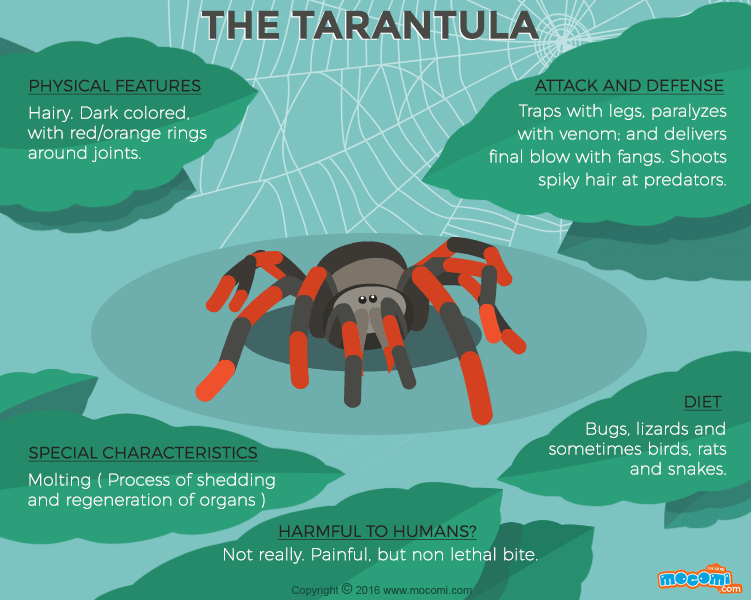What comes to mind when someone says “scary spider”? Chances are, you’re thinking of a huge hairy 8-legged creature. What you’re thinking of is a tarantula, and believe it or not, they’re really not that harmful (at least not if you’re human). Surprising isn’t it?
What are Tarantulas?
Commonly known as Tarantulas, the scientific name of these spiders is The raphosidae, and they are part of a family of spiders called Hairy Mygalomorphs. Scientists believe that they’ve been around for millions of years and have not changed much in that time! There are around 700 kinds, or species, of Tarantulas.
How to identify Tarantulas
They are dark, hairy spiders with orange or red rings on the joints of their legs. Their average size is around 4.75 in (12 cm), and their average leg span is up to 10 in (28 cm). That’s almost as big as a tea cup!
How long do Tarantulas live?
The life expectancy of a female tarantula is up to 30 years in the wild, and around 20 in captivity. Males, on the other hand, barely make it to 10 years.
Where do Tarantulas live?
They’re typically found in tropical, sub-tropical rain forests and also arid regions and usually live in burrows underground. Unlike spiders they do not use their weaving abilities to ensnare their prey. Instead, they use it to make comfy homes for themselves, be it underground or on trees. Oh, and they also spin fancy trip wires to alert them to intruders approaching their burrows.
What do Tarantulas eat?
Tarantulas are night time hunters who generally prey on small insects. Some larger species of tarantulas also prey on rats, lizards, and even snakes and small birds! They trap their prey with their legs, paralyze them with their venom, and later dispatch the victims with their fangs. And they also secrete digestive enzymes to liquefy their victims’ bodies before ingesting them! That’s some serious arsenal they pack! After a big meal, they can go for a month without eating.
The hairy arachnids periodically shed their external skeletons in a process called molting. In this process, they also replace their internal organs, such as female genitalia and the lining of the stomach. They also have the ability to regrow lost appendages!
Tarantulas have a very interesting defence mechanism. Their abdomen is covered with sharp little barb like hairs. When threatened, they rub these hairs with their legs and shoot them at their predators.
Are Tarantulas poisonous?
The worst enemy of a tarantula is the spider wasp, which would paralyze a tarantula and lay an egg inside it. The larva would then feed on the tarantula as it hatches. Other predators of the tarantula include hawks, snakes, skunks, and humans. Believe it or not, there are people who eat tarantulas! Tarantulas, on the other hand, are rather docile when it comes to humans, and rarely bite us! And even if they do, their venom isn’t poisonous to us. The bite would still hurt though.
The next time you come across a tarantula, play nice, and maybe it will, too.
You may also like How do Spiders Make Webs?, visit: https://mocomi.com/how-do-spiders-make-webs/


